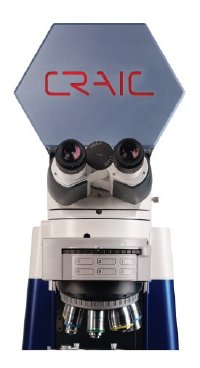Nov 17 2008
Surface Plasmon Resonance (SPR) effects are the basis behind many biosensors and microfluidic device detectors currently in use or under development. Simply put, surface plasmons are electromagnetic waves that propagate along the surface of an interface between a metal and a dielectric.

The plasmons are excited by illuminating them with ultraviolet, visible or near infrared light and the spectral characteristics of the plasmons can be measured with instruments such as CRAIC Technologies microspectrophotometers. Changes in the metal-dielectric interface, such as when the surface is in contact with water or a biological molecule, causes the spectrum of the plasmons to change. This variation can be measured by the microspectrophotometer and is the basis for this class of sensor. As such, the SPR sensor can be tuned to detect many different analytes with a high level of sensitivity. These sensors can be made on the microscopic scale sensors and can even be patterned to maximize their utility and sensitivity to different materials in different locations.
UV-visible-NIR microspectrophotometers are required for the development and analysis of SPR sensors for several reasons. Firstly, the sensors can be made on the micron scale and the microspectrophotometer can easily measure their spectral characteristics at that scale. Patterning does not present an issue as the microspectrophotometer measurement area is usually much smaller than the pattern features. This is especially important as it allows for a complete characterization of the sensors that are to be used in the next generation of lab-on-a-chip devices and WMD sensors. Even more importantly, a microspectrophotometer can be configured to monitor the spectral characteristics of SPR devices by a number of different means.
Microspectrophotometers can monitor the reflectance off the surface, the transmission through an SPR film or even it's fluorescent emission. Using microspectrophotometers means that ever smaller sensors with denser patterns can be developed.